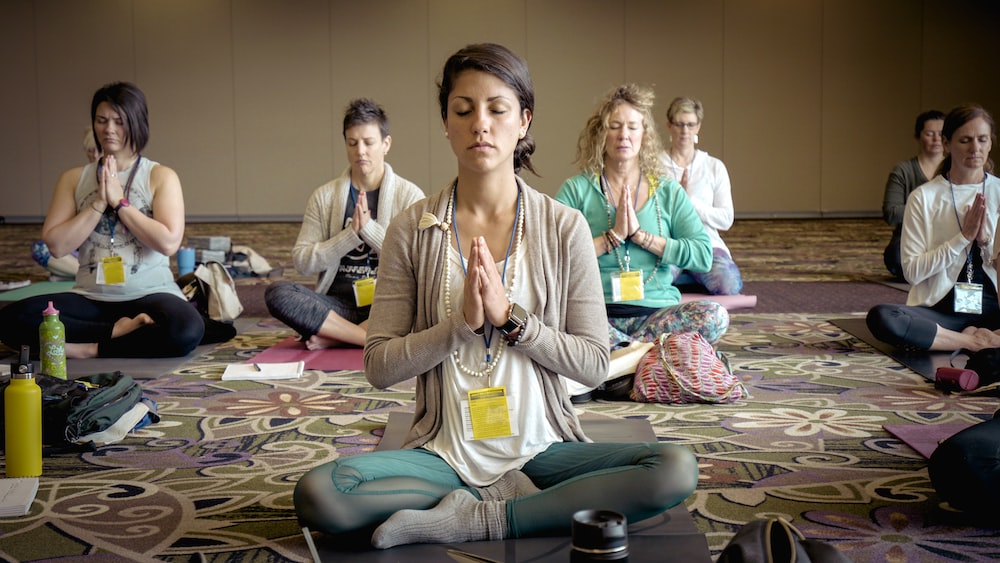What Does It Mean To Be Mindful? Understanding The Basics
Welcome to your journey of self-discovery and growth! In today’s fast-paced world, it’s easy to get lost in the hustle and bustle of daily life. But what if there was a way to find peace and balance amidst the chaos? That’s where mindfulness comes in. In this article, we’ll explore the fundamentals of mindfulness, its origins, and the various practices that can help you lead a more fulfilling and peaceful life. So, buckle up and get ready to embark on an incredible journey of self-improvement!
Mindfulness is more than just a buzzword; it’s a powerful tool that can transform your life in ways you can’t even imagine. By practicing mindfulness, you’ll be able to tap into the innate power of your mind and unlock your full potential. Excited yet? You should be! Because by the end of this article, you’ll have a deeper understanding of mindfulness and how it can help you lead a happier, healthier, and more balanced life.
But before we dive into the nitty-gritty of mindfulness, let’s take a moment to understand what it really means. After all, you can’t embark on a journey without knowing your destination, right? So, let’s start by defining mindfulness and exploring its origins.
Defining Mindfulness
Mindfulness, at its core, is the practice of paying attention to the present moment in a non-judgmental and compassionate manner. It involves being aware of your thoughts, feelings, and sensations, without getting caught up in them. By practicing mindfulness, you can develop a greater sense of self-awareness and emotional intelligence, leading to improved well-being and overall life satisfaction.
The Origins of Mindfulness
Mindfulness has its roots in ancient Eastern traditions, particularly Buddhism. The practice of mindfulness, or “sati” in Pali, is an essential component of the Buddhist path to enlightenment. However, mindfulness is not limited to Buddhism; many other spiritual traditions, such as Hinduism and Taoism, also emphasize the importance of being present and fully engaged in the moment.
Over the past few decades, mindfulness has gained traction in the Western world, thanks to pioneers like Jon Kabat-Zinn, who established the Mindfulness-Based Stress Reduction (MBSR) program in 1979. This program integrates mindfulness practices with modern psychological theories, making it accessible to a wider audience and highlighting the numerous benefits of mindfulness for mental and physical health.

Mindfulness is a practice that has its roots in ancient Eastern traditions and has gained popularity in the Western world due to pioneers like Jon Kabat-Zinn, who established the Mindfulness-Based Stress Reduction program.
The Key Components of Mindfulness
There are three main components of mindfulness that work together to create a holistic practice: awareness, attention, and attitude. Let’s explore each of these in more detail:
- Awareness: This is the foundation of mindfulness. It involves being conscious of your thoughts, feelings, and bodily sensations as they arise in the present moment. By cultivating awareness, you can gain greater insight into your emotions and thought patterns, allowing you to make more informed decisions and respond to situations more effectively.
- Attention: This component involves intentionally focusing your attention on the present moment. This can be achieved through different techniques, such as meditation, body scans, or mindful movement. By honing your attention skills, you can learn to be more present in your day-to-day life and fully engage in each moment.
- Attitude: The final component of mindfulness is cultivating an attitude of non-judgment, compassion, and curiosity towards your experiences. This means accepting your thoughts and feelings as they are, without labeling them as “good” or “bad.” By adopting this open and accepting attitude, you can develop greater emotional resilience and foster a deeper connection with yourself and others.
The Benefits of Mindfulness
Mindfulness offers a myriad of benefits that can improve your overall well-being and quality of life. From enhancing mental health to boosting physical health and fostering better relationships, the advantages of practicing mindfulness are truly remarkable.
Mental Health Benefits
One of the most significant benefits of mindfulness is its positive impact on mental health. Numerous studies have shown that mindfulness can help reduce symptoms of stress, anxiety, and depression. By developing a greater awareness of your thoughts and emotions, you can learn to recognize negative thought patterns and develop more adaptive coping strategies.
Furthermore, mindfulness has been found to improve cognitive functioning, including attention, focus, and memory. This can lead to increased productivity and better performance in both personal and professional settings. Additionally, mindfulness can enhance emotional regulation, helping you to manage your emotions more effectively and respond to challenging situations with greater resilience.
Physical Health Benefits
But the benefits of mindfulness don’t stop at mental health; they extend to physical health as well. Research has shown that mindfulness can help to lower blood pressure, reduce chronic pain, and improve sleep quality. It has also been linked to a stronger immune system, making it easier for your body to fight off infections and diseases.
Moreover, mindfulness can help to regulate appetite and promote healthier eating habits, which can contribute to weight loss and better overall health. By being more aware of your bodily sensations and internal cues, you can make more mindful food choices and develop a healthier relationship with food.
Emotional Well-being and Relationships
Mindfulness can also enhance your emotional well-being and interpersonal relationships. By cultivating greater self-awareness and emotional intelligence, you can develop a stronger sense of empathy and compassion for yourself and others. This can lead to improved communication, deeper connections, and more satisfying relationships with your loved ones.
In addition, mindfulness can help to boost self-esteem and self-acceptance, allowing you to embrace your strengths and weaknesses and appreciate your unique qualities. This newfound self-love can have a ripple effect on your relationships, as you become more confident and authentic in your interactions with others.
Types of Mindfulness Practices
There are numerous ways to incorporate mindfulness into your daily life, ranging from formal meditation practices to simple everyday activities. Let’s explore some of the most popular and effective mindfulness practices.

Mindfulness Meditation
One of the most well-known and widely practiced forms of mindfulness is meditation. Mindfulness meditation involves sitting comfortably and focusing your attention on a specific object, such as your breath, a mantra, or a physical sensation. The goal is not to eliminate thoughts, but rather to observe them as they arise, without judgment or attachment.
There are many different styles of mindfulness meditation, including concentration meditation, loving-kindness meditation, and body scan meditation. By experimenting with different techniques, you can find the one that resonates with you and best supports your mindfulness practice.
Body Scan Techniques
Body scan techniques are a powerful way to practice mindfulness by bringing awareness to the different sensations in your body. By focusing on each body part, you become more in tune with your body’s sensations and can foster a deeper connection with yourself.
This practice usually starts at the top of your head and moves down through your body, ending at your toes. You can do this by sitting or lying down in a comfortable position, taking deep breaths, and focusing on each body part as you release tension and relax. The body scan technique helps to increase your awareness of the present moment and promotes a sense of relaxation and acceptance.
Mindful Eating
Mindful eating is a practice that involves bringing full attention to the process of eating, from the initial sight and smell of the food to the taste, texture, and sensations experienced during consumption. This practice encourages you to slow down and savor each bite, fostering a deeper appreciation for the food you eat and the environment in which you are eating.
To begin, sit down at a table and take a moment to observe your food, noticing its colors, textures, and scents. As you begin to eat, take small bites and chew your food slowly, paying attention to the taste and texture in your mouth. By eating mindfully, you can become more aware of your body’s hunger and fullness signals, helping to reduce overeating and promote a healthier relationship with food.
In addition to the physical aspects of mindful eating, it is important to cultivate an attitude of gratitude and appreciation for the food you consume. This can be done by acknowledging the effort and resources that went into producing the meal, as well as recognizing the nourishment and satisfaction it provides. By practicing mindful eating, you can develop a more positive and meaningful connection with food.
Mindful eating involves bringing attention to the process of eating, encouraging you to slow down and savor each bite, helping reduce overeating and promote a healthier relationship with food, while developing a more positive and meaningful connection with food.
Mindful Movement
Mindful movement is the practice of incorporating mindfulness into physical activities, such as yoga, tai chi, or even walking. By focusing on the sensations in your body as you move, you can develop a deeper awareness of your body and its connection to the environment.
To practice mindful movement, choose an activity that you enjoy and begin by paying attention to your breath as it flows in and out of your body. As you move, observe the sensations in your muscles and joints, and notice how your body responds to the environment around you. By staying present and engaged in the activity, you can cultivate a sense of acceptance and appreciation for your body and its capabilities.
How to Cultivate Mindfulness in Daily Life
Cultivating mindfulness in daily life involves incorporating mindfulness practices into your routine activities and finding ways to bring awareness, acceptance, and attention to the present moment. By doing so, you can experience a greater sense of well-being and fulfillment in your everyday life.
Incorporating Mindfulness into Routine Activities
One effective way to incorporate mindfulness into your daily life is by turning routine activities into mindful experiences. Here are a few examples:
- When brushing your teeth, pay attention to the sensation of the toothbrush on your teeth and gums, the taste of the toothpaste, and the movement of your hand.
- While taking a shower, focus on the feeling of the water on your skin, the temperature, and the sound of the water hitting the floor.
- As you walk from one place to another, observe the sensation of your feet hitting the ground, the movement of your body, and the environment around you.
By bringing awareness to these ordinary tasks, you can transform them into opportunities for mindfulness practice and cultivate a habit of being present in the moment.
Developing a Regular Meditation Practice
A key component of cultivating mindfulness is developing a regular meditation practice. By setting aside time each day to meditate, you can train your mind to be more focused, aware, and accepting of the present moment.
To start, choose a time and place where you can sit quietly and undisturbed for a few minutes each day. Begin by focusing on your breath and observing any thoughts, feelings, or sensations that arise without judgment. Over time, you can gradually increase the duration of your meditation sessions and explore different types of mindfulness practices, such as body scans, loving-kindness meditation, or guided visualizations.
Mindful Communication and Listening
Mindful communication involves being fully present and engaged when interacting with others, allowing for more genuine and meaningful connections. To practice mindful communication, focus on the following aspects:
- Paying attention to the person speaking, including their words, tone of voice, and body language.
- Listening with an open mind and without judgment, allowing the speaker to feel heard and understood.
- Responding thoughtfully and authentically, rather than reacting impulsively or defensively.
In addition to improving your relationships, mindful communication can also help to reduce misunderstandings and conflicts, leading to greater harmony and cooperation in both personal and professional settings.
Mindfulness in the Workplace and Education
Incorporating mindfulness in the workplace and education settings can lead to numerous benefits, including reduced stress, improved focus, and enhanced well-being for employees and students alike.
The Role of Mindfulness in Reducing Stress at Work
Mindfulness can play a significant role in reducing stress at work by helping employees develop greater awareness of their thoughts, feelings, and physical sensations. By cultivating this awareness, employees can better recognize the signs of stress and learn to respond more effectively.
Some ways to incorporate mindfulness in the workplace include:

- Offering mindfulness workshops and training programs for employees.
- Encouraging mindful breaks throughout the day, such as taking a few minutes to breathe deeply or go for a short walk.
- Providing quiet spaces for employees to meditate or engage in other mindfulness practices.
Incorporating mindfulness in the workplace can significantly reduce stress by helping employees become more aware of their thoughts and feelings, and employers can encourage this by offering workshops, encouraging mindful breaks, and providing quiet spaces for meditation.
Implementing Mindfulness Programs in Schools
Introducing mindfulness programs in schools can have a profound impact on students’ well-being, academic performance, and social skills. Research has shown that mindfulness can help students:
- Improve focus and attention, leading to better academic performance.
- Develop greater emotional regulation, reducing instances of disruptive behavior.
- Enhance empathy and compassion, promoting positive relationships and a supportive learning environment.
To implement a mindfulness program in a school, educators can:
- Introduce mindfulness practices, such as meditation and mindful movement, into the curriculum.
- Offer workshops and training for teachers, so they can model and teach mindfulness to their students.
- Create a “mindful” school culture that encourages students to be present, engaged, and compassionate members of the school community.
Overcoming Common Challenges in Mindfulness Practice
Embarking on the journey of mindfulness can be a life-changing experience, but it is not without its challenges. In this section, we will address some of the most common obstacles practitioners face and provide practical tips to help you overcome them, allowing you to fully reap the benefits of mindfulness practice.
Dealing with Distractions
Distractions are inevitable, especially in our fast-paced, technology-driven world. The key to dealing with distractions during mindfulness practice is to acknowledge them without judgment, and then gently redirect your focus back to the present moment. Remember, your wandering mind is not a sign of failure, but rather an opportunity for growth. Embrace the challenge and develop your “mindfulness muscle” by repeatedly refocusing your attention.
Another effective strategy to minimize distractions is creating a conducive environment for your practice. Choose a quiet, comfortable space where you can dedicate time to meditation, free from interruptions. Additionally, turning off electronic devices and setting clear boundaries with family or friends can greatly enhance your ability to maintain focus during mindfulness exercises.
Addressing Misconceptions about Mindfulness
Misconceptions about mindfulness can hinder your progress and limit the benefits you experience. One common myth is that mindfulness is only for monks or individuals with extensive meditation experience. In reality, mindfulness can be practiced by anyone, regardless of their background or expertise. It’s a universal skill that can be cultivated with practice and patience.
Another misconception is that mindfulness is solely about relaxation or emptying your mind. While relaxation can be a byproduct of mindfulness practice, its primary goal is to develop a non-judgmental awareness of your thoughts, emotions, and physical sensations. This heightened awareness can lead to improved mental health, emotional well-being, and even physical health benefits, as supported by numerous research advancements.
FAQs
1. How long does it take to see the benefits of mindfulness?
To see the benefits of mindfulness varies for each individual, as the time required to experience noticeable improvements depends on factors such as the consistency of your practice, your level of commitment, and your individual needs. Some people may notice benefits within a few weeks, while others may need several months of consistent practice.
2. Can mindfulness be practiced by people of all ages?
Yes, mindfulness can be practiced by people of all ages, from young children to senior citizens. In fact, research has shown that introducing mindfulness practices to children can improve their focus, emotional regulation, and overall well-being.
3. Is mindfulness compatible with religious beliefs?
Mindfulness is indeed compatible with various religious beliefs, as it is a secular practice focused on cultivating awareness and compassion. While mindfulness has its roots in Buddhist traditions, its principles can be applied by individuals of any faith or spiritual background.
4. What is the difference between mindfulness and meditation?
The difference between mindfulness and meditation lies in the fact that mindfulness is a state of being or a quality of awareness, while meditation is a structured practice designed to cultivate mindfulness. Meditation is one of the many tools that can be used to develop mindfulness in daily life.
Conclusion
Mindfulness is a powerful tool that can transform your life in numerous ways, from improving mental health to enhancing relationships and even boosting physical well-being. By understanding the basics of mindfulness, overcoming common challenges, and implementing various practices into your daily routine, you take a step towards a more centered, harmonious life. Remember, mindfulness is a journey, not a destination, and every moment of awareness is a valuable opportunity for growth and self-discovery. So, why not start today and experience the profound benefits of mindful living?
I wish you the best! Fabian.
Share with your Friends:






